#EdwardVI
Explore tagged Tumblr posts
Text
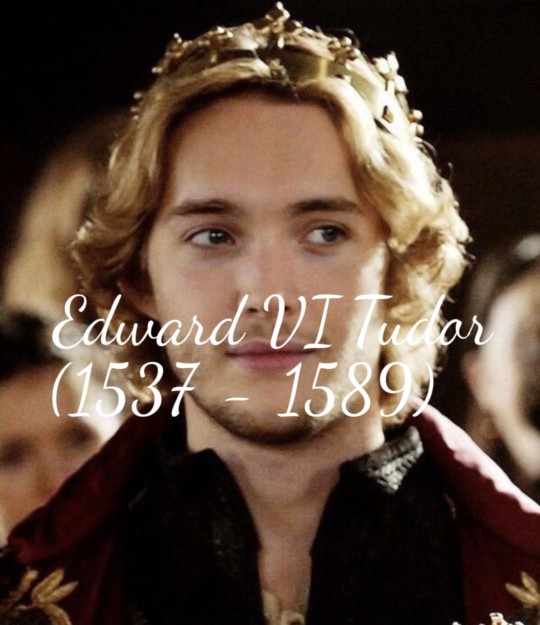





A happier life for Henry VIII's children: Part 3.
Edward was the son of King Henry VIII of England and his third wife Jane Seymour. The birth of a healthy boy was a great miracle and joy not only for his father, but for the whole of England. Edward's childhood was happy, because he had his own mother with him, who with her gentle voice could calm and support him. But it did not last long, in 1547 the boy had to grow up sharply and take on his children's shoulders the responsibility for the whole country, because his father Henry VIII died. His older sister Mary, Queen of France, became regent until the little king came of age. Mary ruled in her brother's place for 8 years. In addition, Mary and Jane did not allow the latter's brothers to influence the young king. Edward and Thomas Seymour were angry about this and they even tried to remove Mary from power, but they failed. The Queen of France uncovered the plot and sent them both to the Tower for life. In 1557 Mary's regency ended and she returned to France, and Edward became the rightful ruler of his state. Two years earlier the king had become interested in Protestantism, and secretly from his mother and sister he began to study it. At a council, he told his lords that he wished all England to convert to this religion, and most of his advisors supported his idea. The Queen Dowager of England tried several times to dissuade her son, but he became angry and made it clear that he would not allow her to interfere in his affairs of state. Queen Mary of France also did not lag behind and tried to return her brother to Catholicism and her attempts were not successful. But there were also those who disagreed, and because of this there were riots and rebellions in the country, the rioters demanded that the king left his venture and returned to the true faith. However, the king was not deterred by their demands, Edward managed to quell the rebellions and to appease his subjects, he declared in public that he would be tolerant and let them believe what they wanted. And to reconcile Catholics and Protestants, Edward promised to marry a Catholic princess, but their children would be Protestants, and to marry his other older sister Elizabeth to a Protestant. In 1558, the princess married the eldest son of the King of Sweden and left England for good. The king himself married Mary Stuart a year later. The marriage between the King of England and the Scottish Queen was a very successful and cohesive one. Mary appointed her consort as her companion and they lived on two countries.
Jane of England(1560 - 1618). Duchess of Angoulême. In 1578 she married her cousin Charles. Their married life was not a happy one. After the birth of their last child, the couple finally drifted apart and stopped living together. Four children were born in the marriage.
Henry IX of England(1561 - 1611). King of England, Ireland and Scotland. In 1589 he became King of England, and in 1600 of Scotland. In 1605 he proclaimed himself king of Great Britain. He was married, but did not love his wife, during their marriage he never touched her. Also the king had a mistress who bore him 5 children out of wedlock: Mary, Edward, Elizabeth, Grace and James. Died at the age of 51 of bubonic plague.
James I of England(1563 - 1627). King of Great Britain. Inherited from his older brother, as the latter had no legitimate children. Also, unlike Henry, he loved his wife and never cheated on her. Husband of Elizabeth of Denmark, father of 11 children: Edward VII, Sophia, Charles, George, Isabella, Joan, Frederick, Barbara, Henrietta, Arabella and Robert.
Mary of England(1564 - 1590). Mary was given in marriage to her cousin at the age of 18. The marriage produced 4 children. In 1590, Mary contracted pneumonia and died on the anniversary of her father's death.
Elizabeth of England(1567 - 1570). In 1570, the princess caught cold, contracted pneumonia and died at the age of 3.
Margaret of England(1569 - 1624). She was married twice, but both her husbands died shortly after the marriage. After the death of her second husband, Margaret declared that she would never marry again. She founded a charitable foundation and helped anyone in need, she especially focused on helping women and children.
Edward of England(1572 - 1586). Duke of Somerset and Albany. From birth had poor health. Died at the age of 14 from smallpox.
Richard of England(1575 - 1655). Duke of Somerset and Albany. After the death of his brother in 1586 all his titles passed to him. The Prince was noted for his good health and poetic ability. During his lifetime he became a famous poet. In 1600 he married Elizabeth Howard, after the wedding Richard and Elizabeth removed from the court and began to live a happy and quiet family life. The marriage produced 7 children: Mary, William, Edward, Philip, Anne, Catherine, and Nicholas.
Jane Seymour loved her daughter-in-law as her own daughter, the dowager queen liked to spend time in the circle of her grandchildren. On her son, she had almost no influence, but the king loved his mother and because of respect sometimes listened to her advice. Jane died in 1565, and Edward was greatly grieved by her death. Mary, more than anyone else, understood how her brother felt and despite their differences on matters of religion, came to England to give him moral support. In the end, they finally reconciled. Edward VI was a king beloved by the nobility and the people. For most of his reign, he tried to try on Catholics and Protestants and prevent religious warfare within the country. On top of that, the king gave shelter and protection to Protestants who had fled religious persecution. Edward VI died of tuberculosis in 1589. He was buried in Westminster Abbey next to his parents and other family members. Eleven years later, his wife Mary Stuart was buried next to him.
#english history#history#royal family#royalty#history au#au#royal#henryviii#the tudors#16th century#british royal family#edwardvi#marytudor#mary stuart#anne boleyn#catherine of aragon#elizabethi#elizabeth tudor#jane seymour
16 notes
·
View notes
Text
EDWARD VI
EDWARD VI OF ENGLAND
12 October 1537 – 6 July 1553
Prince Edward was the son of King Henry VIII and Jane Seymour, he was the first legitimate son of Henry VIII and the king’s heir. He had two older sisters Princess Mary and Princess Elizabeth.
In 1547 Edward VI, 9, became king on his father’s death. Edward did not find out about his father’s death immediately. He was taken to Enfield, where Princess Elizabeth (Elizabeth I) was living. There they were told of the death of their father and they both cried in each other’s arms. Edward was then taken to the Tower of London where he was welcomed by cheering crowds. Edward Seymour became his protector and Edward was crowned at Westminster Abbey on 20 February.
In February 1553 Edward fell ill, he had good and bad days but after a while it became obvious it was terminal. His older sister Mary was next in line; however, she was a Catholic and Edward was a Protestant and those in power did not want a Catholic in power. Whilst in power, Edward had transformed the Church of England into Protestantism. He excluded Mary and Elizabeth from ruling for being ‘bastards’. Even though Henry VIII’s will stated Mary and Elizabeth were next in line to the succession. There were no males to inherit the throne, so he passed it onto his cousin, Lady Jane Grey, 16.
Edward suffered with a fever, a cough and had difficulty breathing. He suffered so much at the end of his life that he turned to his tutor John Cheke and said, “I am glad to die”. Edward, 15, died at Greenwich Palace, his last words were, “I am faint; Lord have mercy upon me, and take my spirit”. He was buried next to his grandfather, Henry VII at Westminster Abbey, the people of London wept. It was believed Edward had died from lung disease or tuberculosis.
Jane only ruled for nine days before Mary took the throne. Mary died childless of what is believed to have been cancer, Elizabeth I took the crown and became one of the most favourable monarchs in English history.

#EdwardVI
0 notes
Video
youtube
The Tudor Dynasty EXPLAINED in 10 Minutes (Or Your Money Back!)
#youtube#reformation renaissance royalhistory tudors englishhistory henryviii elizabethi englishreformation warsoftheroses anneboleyn maryi edwardvi
0 notes
Text

Susanna window
https://www.stedscathedral.org/wp-content/uploads/2019/02/Library_News_14_Sir_Toby_Belch_and_the_Susannah_Window_v2.pdf
Sir Toby Belch and the Susannah Window
The oldest glass in the Cathedral, dating from about 1500, is now in the ‘Susanna window’ at
the west end of the south aisle. The bottom half shows the story from the Apocrypha of
Susanna and the elders who hid in her garden and falsely accused her of adultery. When she
was brought to trial, however, the young prophet Daniel defended her, exposing the
inconsistencies in her influential accusers’ story and in the end it was they, not Susanna, who
were stoned to death.
This story was very popular in the sixteenth century and was set to music as a broadside
ballad Constant Susan. You could buy a copy for ½d or 1d from the 1560s onwards and it
was reprinted even into the nineteenth century.
Remarkably the tune to this ballad, but with different words, is written on the title page of a
book in the Ancient Library. The book, originally from the Suffolk parish of South Elmham,
is a copy of the Paraphrases of Erasmus, one of the books, along with the Prayer Book, the
Bible in English and Foxe’s Book of Martyrs that all churches were required to possess in the
reign of Elizabeth I.
The book itself was ‘Empriented at London in Flete Strete at the signe of the sunne by
Edwarde Whitchurche, the last daie of Januarie 1548’. However the earliest handwritten date
in this volume is 1561, just 2 years after William Elderton, an actor at the court of EdwardVI,
published his first known ballad, The panges of love and lovers fits, which begins ‘Was not
good King Solomon ravished in sundry wise’ – exactly the same as copied in our book.
Sir Toby Belch? In Twelfth Night Act 2 Scene 3, the drunken Sir Toby sings ‘There dwelt a
man in Babylon, Lady, Lady’ the opening line and the refrain of the ballad Constant Susan.
No doubt the audience at the first performance in February 1602 knew the tune well enough
to sing along and recollect the story depicted in our Susanna window.
Stephen Dart and Margaret Statham
2018
Source: Facebook
Folklore, Customs, Legends & Mythology
Location: Edmundsbury Cathedral
4 notes
·
View notes
Text
we defeated ohio

#memes#ohio#only in ohio#edwardtudor#edward vi of england#edward vi#edwardvi#king edward vi#king edward vi of england#internet memes#goofy ahh memes#kracc bacc#edward vi memes#tudor memes
2 notes
·
View notes
Text
#JamesVI#Elizabeth#LadyJaneGrey#SpanishArmada#BloodyMary#EdwardVI#VirginQueen#MaryQueenofScots#Stuarts#history#Twitterstorians#Britishhistory#politics
2 notes
·
View notes
Text




4 of the greatest Tudor palaces - Richmond, Whitehall (York Place), Greenwich and Hampton Court. Of the 4, only Hampton Court remains, the other 3 being either demolished or burned down. 👑👑
#tudors#house of tudor#henry vii#elizabeth of york#henry viii#catherine of aragon#anne boleyn#jane seymour#anna of kleves#catherine howard#catherine parr#edwardvi#maryI#elizabethI
20 notes
·
View notes
Photo





Alternate Edwards! woo look at these adorbale bois!
Out of all the alteernates this was hardest because men these days are so boring with fashion and style! Guys! Sort out fashion! Give it more pa-zazz!
Anyway here we go hope you like them :)
#edwardvi#edward tudor#edward alternate#six#six the kids#six the musical#six kids#my art#still sick#Native American#black/white#mixed#korean#hispanic#latino
408 notes
·
View notes
Photo

12th October 1537, birth of Edward VI, only son of Henry VIII, and Tudor, King of England from 1547 to 1553, the first English monarch to be raised and educated as a Protestant. Although crowned at the age of nine, his reign was supervised by a regency council led by his uncle Edward Seymour, brother of Jane Seymour, Henry VIII’s third wife. After only six years after he was crowned, Edward began to show signs of illness, with a persistent cough and fever that got worse in successive months, until he began to cough up blood, and by July was "thin and wasted"; telling his tutor John Cheke that he was "‘glad to die". In order to ensure a Protestant successor to the throne, Edward named his first cousin Lady Jane Grey, who was born a day after Edward on the 13th October 1537, as his heir, excluding his half-sisters, Mary and Elizabeth. On the 6th July 1553, Edward finally died at 8pm. Four days later Lady Jane Grey was proclaimed Queen of England, reigning for nine days before being deposed by supporters of Mary, who later would be known to history as ‘Bloody Mary’. Arrested for high treason, and imprisoned in the Tower of London, Lady Jane Grey was initially spared by Mary, but finally executed on the 12th February 1554, becoming immortalised as the ‘Nine days’ Queen’. Most historians believe that Edward died of a combination of tuberculosis, measles and smallpox. There was however suspicions upon his death that Edward was secretly poisoned by either the Duke of Northumberland, Lady Jane Grey’s father in law John Dudley, or by Catholics plotting to return England to Catholicism under Mary. No evidence for either theory has been found however. After Lady Jane Grey was deposed Dudley was convicted of high treason and executed on the 22nd August 1553. Continued in the comments. #tudors #tudorhistory #thetudors #tudor #henryviii #englishhistory #maryi #ladyjanegrey #history #tudorengland #henryvii #elizabethofyork #margarettudor #edwardvi #elizabethi #englishhistory #bloodymary #catholicism #protestant #toweroflondon #warsoftheroses #lancastrian #yorkist #houseoflancaster #houseofyork #thomascromwell #reign #edwardseymour #thisweekinhistory #tudorroyal https://www.instagram.com/p/CVDiaDTF8kw/?utm_medium=tumblr
#tudors#tudorhistory#thetudors#tudor#henryviii#englishhistory#maryi#ladyjanegrey#history#tudorengland#henryvii#elizabethofyork#margarettudor#edwardvi#elizabethi#bloodymary#catholicism#protestant#toweroflondon#warsoftheroses#lancastrian#yorkist#houseoflancaster#houseofyork#thomascromwell#reign#edwardseymour#thisweekinhistory#tudorroyal
2 notes
·
View notes
Photo

#OnThisDay 🇬🇧 Year 1547, Edward VI was crowned King of England after the death of his father Henry VIII. He was crowned at Westminster Abbey at the age of nine. Edward was the son of Henry VIII and Jane Seymour, and England's first monarch to be raised as a Protestant. During his reign, the realm was governed by a regency council because he never reached maturity. The council was first led by his uncle Edward Seymour, 1st Duke of Somerset (1547–1549), and then by John Dudley, 1st Earl of Warwick (1550–1553), who from 1551 was Duke of Northumberland. #RoyalHistory #HistoryofRoyals #EdwardVI #HenryVIII #JaneSeymour #KingofEngland #Monarchy #EuropeanRoyalties https://www.instagram.com/p/CLgQjwHFcvt/?igshid=1kypkt0ufcxib
#onthisday#royalhistory#historyofroyals#edwardvi#henryviii#janeseymour#kingofengland#monarchy#europeanroyalties
2 notes
·
View notes
Text

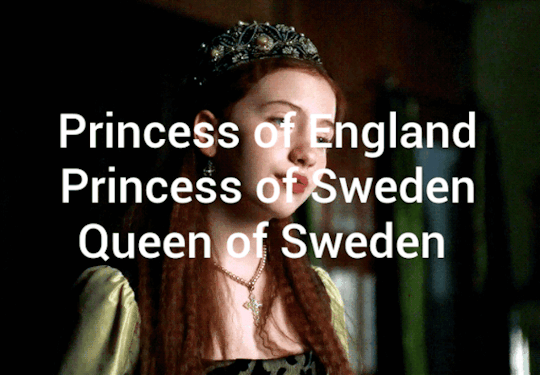

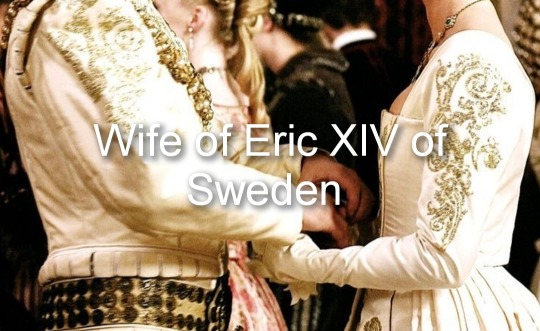

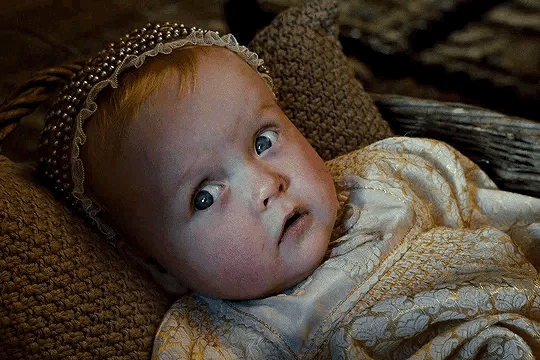
A happier life for Henry VIII's children. Part 2.
Elizabeth was the second daughter of King Henry VIII of England and his second wife Anne Boleyn. When the girl was 3 years old, the king annulled the marriage to her mother. Henry sent Anne to a convent and forbade Anne to communicate with her daughter, and soon afterward married Jane Seymour. She developed a close relationship with her stepmother, brother and sister. In 1547, her father died and Elizabeth was finally able to meet her mother. The meeting between mother and daughter after years of separation was very touching. When Anne saw Elizabeth, she could not believe that this beautiful girl was her daughter. First they cried for a long time in each other's arms, and then they sat up all night talking. They had a lot to say to each other. So their meetings became more and more frequent, and Edward allowed his father's second wife to stay with Elizabeth. In 1557 Edward VI began to look for worthy suitors from Protestant countries, for the hand of his sister, and his choice fell on the eldest son of the King of Sweden, Prince Eric. In the king's opinion, this marriage was to strengthen the sympathy of his subjects for him. In 1558, the princess became the wife of the heir to the Swedish crown, and 2 years later they became King and Queen of Sweden. It is said that at their first meeting the prince was so enchanted by her beauty that he lost the power of speech. Their married life was strong and passionate. For her husband Elizabeth became the most important confidante, with whom he discussed many problems. Six children were born in the marriage:
Gustav II of Sweden (1559 - 1605) Not interested in politics and never wanted to be king. Overthrown and killed by conspirators, including his own son Charles. Husband of Maria of Austria. Father of 4 children: Charles IX, Ludwig, Frederick, Elizabeth.
Anne of Sweden (1560 - 1634) Countess of East Friesland. At the age of 18 she married her cousin Enno III. The marriage was a happy one for both spouses. They became the parents of 9 children: Edzard III, Sabina, Agnes, Johann, Gustav, Rudolf, Christina, Sophia, Christian.
Magnus of Sweden(1561 - 1619) In 1582 he married his cousin Mary of England. They had 4 children: Nils, Katharina, Gunilla, Arnold. Magnus was widowed in 1590. And in 1592 he married his mistress Maria Oberg, but before that he received from his elder brother-king and his mother a permission to remarry. From his second wife he had 6 children: Magdalena, Sven, Hokon, Valdemar, Ingeborga, Svante.
Johan of Sweden(1565 - 1630) From childhood Johan was interested in navigation and discoveries. Therefore, he spent most of his life traveling, exploring lands not previously known. He was never married, however he recognized 3 children: Brita, Lars, Eric. And upon his death, he left each child a generous inheritance.
Cecily of Sweden(1567 - 1634) Macgravine of Baden-Rodemachern. In 1583 became the wife of Edward Fortunatus They became the parents of 5 children: Christoph III, Cecily, Elizabeth, Ottilia, Herman. In 1603, her husband died and Cecily was offered remarriage
Virginia of Sweden(1570 - 1606) Duchess of Holstein-Hottorp, wife of Johann Adolf. Virginia was older than her husband by 5 years, but despite this their marriage was happy. They had 7 children: Frederick III, Elisabeth, Conrad, Dorothea, Gedviga, Albrecht and Augusta. The Duchess died of childbirth fever a week after the birth of the last child. After the death of his wife, Johann lived the remaining 10 years until his death as a widower.
In 1568, the queen returned briefly to England for her mother's funeral. In 1577, King Eric XIV of Sweden died, and Elizabeth mourned her husband's death bitterly. But fortunately for Elizabeth, she had her children and grandchildren by her side, who became the meaning of her life. In addition, the Queen Dowager actively influenced the policies of her eldest son, King Gustav II. Gustav, weak-willed and indecisive, was not interested in ruling the state. In fact, the kingdom was ruled by Elizabeth, which did not please her daughter-in-law. Because of this, the two women often conflicted with each other. In March 1603, the Queen Dowager of Sweden died. She was buried in Uppsala Cathedral next to her husband. And 2 years later Gustav II was overthrown and killed. Her grandson Charles became the next king of Sweden.
Tumblr: History.Period Drama
#history#royal family#royalty#history au#au#royal#the tudors#henryviii#british royal family#anne boleyn#english history#tudors#elizabeth i#marytudor#edwardvi#jane seymour#catherine of aragon#britishmonarchy#royals#english royalty#the other boleyn girl#house of tudor#Tudor time
10 notes
·
View notes
Text
THOMAS SEYMOUR, 1ST BARON SEYMOUR OF SUDELEY
c.1508-1549
Thomas Seymour was the brother of Queen Jane Seymour the third wife of King Henry VIII of England and the uncle of King Edward VI.
Seymour was said to have been attractive and a favourite to the ladies at court. When Henry VIII died, Seymour married the king’s wealthy widow Catherine Parr in 1547.
Parr was living with Lady Jane Grey, 11, and Princess Elizabeth, 14, when Seymour, 40, started preying on Elizabeth. He would flirt with her, tickle her, slap her bum and go into her bedroom when she was in bed. Her governess didn’t approve of his beheavior and the situation got so dire that Elizabeth had to wear clothing to bed so he won’t find her in her bedwear. Parr who was so in love with Seymour, she did very little to stop him. At one point Parr held Elizabeth down whilst Seymour cut the princesses black gown ‘into a thousand pieces.’ When Parr was pregnant in 1548 she had to send Elizabeth away due her husband’s activities with the young teenager. Parr gave birth to a daughter Mary and Parr died not long after and all her wealth went to him. After her death, Thomas pursued Elizabeth and wanted to marry her, Elizabeth wisely avoided him.
His brother Edward was the Lord Protector to the young king Edward VI. Seymour wanted the control and favour of the king, and became so irratic that in January 1549 he broke into King Edward’s apartments. The king’s spaniel woke up and started barking and Seymour panicked and shot and killed it. One of the king’s gentlemen who slept in the king’s chamber awoke and screamed out, ‘Help! Murder!’, Seymour was arrested and sent to the Tower of London. Seymour was executed on 20 March 1549 on Tower Hill and his property was seized by the Royal Crown. His daughter Mary died before she reached adulthood.

#thomasseymour1stbaronseymourofsudeley #thomasseymour #catherineparr #elizabethIofEngland #EdwardVI
0 notes
Text
I was inspired by @arty-e to do designs of the Tudor kids if they had their own spin-off of Six
Here's Edward VI

His music inspiration is sort of from Prince
43 notes
·
View notes
Photo
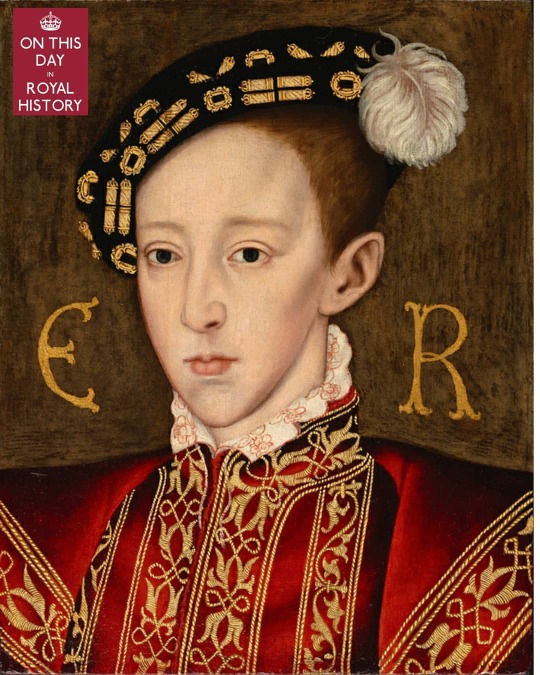
On This Day In Royal History . 12 October 1537 . King Edward VI was born . . 👑 At Hampton Court Palace at two o’clock in the morning on Friday 12th October 1537, St Edward’s Day, Jane Seymour finally gave birth to the future King Edward VI after a long & tiring 30 hour labour. . ◼ Henry VIII had a legitimate son & heir at long last! Church bells around London pealed in celebration, parish churches around the country sang the Te Deum, bonfires were lit, the city merchants gave out fruit & wine, German merchants gave wine & beer to the poor, & the happiest of days was ended by two thousand rounds being fired into the sky from the Tower of London. It was a day of celebration, not only for Henry & Jane, but also for the country. . ◼ Although the Queen seemed to be recovering well from her ordeal at first, she was seriously ill by the 18th. Jane had developed puerperal fever, & by the 23rd, she was delirious, & septicaemia had set in. Jane, the Queen who had given Henry the longed for son & heir, died on the night of the 24th of October. . ◼ Edward was christened on 15 October, with his half-sisters, the 21-year-old Lady Mary (later Queen Mary I) as godmother & the 4-year-old Lady Elizabeth (later Queen Elizabeth I) carrying the chrisom; & the Garter King of Arms proclaimed him as Duke of Cornwall and Earl of Chester. . ◼ Edward’s father, King Henry VIII, died on 28th January 1547, making Edward King Edward VI of England. . . . #OnThisDayInHistory #ThisDayInHistory #TheYear1537 #KingEdwardVI #KingofEngland #EdwardVI #hamptoncourtpalace #TudorHistory #EdwardVIofEngland #HouseofTudor #History #EnglishMonarch #Tudor #EnglishMonarchy #RoyalHistory #HenryVIII #JaneSeymour #Theking #otd #OnThisDay #Tudors #protestant #Tudor #TudorHistory #Artwork #portraitpainting #BritishMonarchy #D12Oct (at Hampton Court Palace) https://www.instagram.com/p/CGPumBkDQ2I/?igshid=1o0lg8ts7whs1
#onthisdayinhistory#thisdayinhistory#theyear1537#kingedwardvi#kingofengland#edwardvi#hamptoncourtpalace#tudorhistory#edwardviofengland#houseoftudor#history#englishmonarch#tudor#englishmonarchy#royalhistory#henryviii#janeseymour#theking#otd#onthisday#tudors#protestant#artwork#portraitpainting#britishmonarchy#d12oct
2 notes
·
View notes
Text
edward vi memes

#edward vi#edwardtudor#edward vi of england#memes#tudors#edwardvi#kingedwardvi#sadblackguy#luaghingblackguy
4 notes
·
View notes
